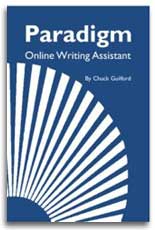Argumentative Essays
While there's no infallible formula for winning over every reader in every circumstance, you should learn how and when to use three fundamental argumentative appeals. According to Aristotle, a person who wants to convince another may appeal to that person's reason (logos), ethics (ethos), or emotion (pathos).
By now, you've probably amassed many notes and ideas for your argument, but you may be wondering how to sort and organize this material into an essay. The following pattern, which gives the traditional Latin names for each section, may help. Like the thesis/support pattern, it offers a basic structural framework that can be modified for various writing contexts. The essential parts include the Introduction, Statement of the Case, Proposition, Refutation, Confirmation, and Conclusion.
This type of argument, as developed by Maxine Hairston, draws upon the communication theories of psychologist, Carl Rogers. Unlike traditional argument, it's not based on an adversarial model and doesn't seek to "win" in the traditional sense, though it might be argued that if the argument is successful, everyone wins.
Page 2 of 2




